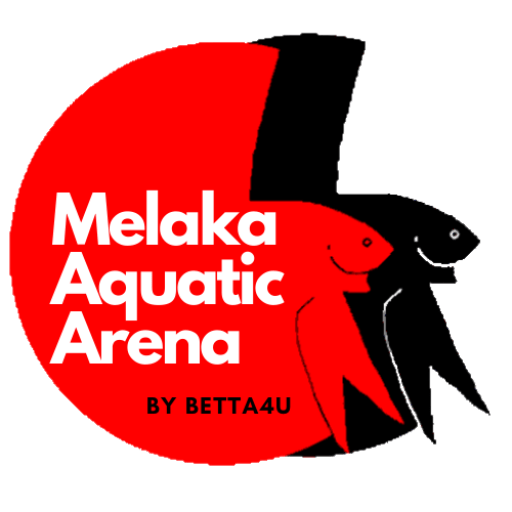Aquatic Life Care, MAA Blog
Mastering Fish Grooming: A Guide to Enhancing Your Aquatic Pets’ Growth and Form
Enhancing Your Aquarium Experience: The Ultimate Guide to Fish Grooming
Introduction
In the world of fishkeeping, ensuring the health and well-being of your aquatic pets goes beyond basic maintenance. Grooming your fish plays a crucial role in promoting their growth, enhancing their coloration, and fostering their overall vitality. In this comprehensive guide, we’ll delve into the art of fish grooming, exploring essential techniques, best practices, and tips for creating a thriving aquarium environment.

Understanding Fish Grooming
Fish grooming encompasses a range of practices aimed at promoting the physical and aesthetic well-being of your aquatic pets. From maintaining proper nutrition to enhancing their natural beauty, grooming plays a vital role in ensuring that your fish thrive in their aquatic habitat.

Key Elements of Fish Grooming
Nutrition: Providing a balanced and nutritious diet is fundamental to fish grooming. High-quality commercial fish foods, supplemented with live or frozen foods and fresh vegetables, ensure that your fish receive essential nutrients for growth and vitality.
-44%Fish Food
Original price was: RM8.90.RM5.00Current price is: RM5.00.Water Quality: Maintaining optimal water quality is paramount for fish health and grooming. Regular water changes, filtration, and monitoring of water parameters help create a clean and stable environment conducive to growth and well-being.
Water Conditioners
Indian-Almond (Terminalia catappa) Ketapang Leaf Extract: Nature’s Elixir for Healthy Fish
RM5.00Tank Environment: Creating a stimulating and enriching environment is essential for promoting natural behaviors and reducing stress in fish. Incorporating plants, rocks, and hiding spots mimics their natural habitat, while proper lighting and water flow enhance their overall well-being.
Physical Maintenance: Regular physical maintenance, such as trimming overgrown fins or removing algae from tank surfaces, helps keep your aquarium clean and your fish healthy. Additionally, monitoring for signs of illness or injury and addressing them promptly is crucial for maintaining fish grooming.
Best Practices for Fish Grooming:
Consistency: Establishing a regular grooming routine and sticking to it is key to ensuring the health and well-being of your fish. Consistent feeding schedules, water changes, and tank maintenance routines promote stability and predictability for your aquatic pets.
Observation: Paying close attention to your fish’s behavior, appearance, and overall condition allows you to identify any potential grooming issues or health concerns early on. Regular observation helps you detect changes or abnormalities and take appropriate action promptly.
Research: Educating yourself about the specific grooming needs of your fish species is essential for providing optimal care. Researching their dietary requirements, preferred habitat conditions, and grooming techniques tailored to their needs ensures that you meet their individual needs effectively.
Tips for Enhancing Fish Coloration:
Color-Enhancing Foods: Incorporating color-enhancing foods containing ingredients such as astaxanthin and spirulina can help intensify the natural colors of your fish over time. Look for high-quality fish foods formulated to enhance coloration for best results.
-23%Original price was: RM12.90.RM9.90Current price is: RM9.90.Environmental Factors: Environmental factors such as lighting, water quality, and tank decor can influence fish coloration. Providing adequate lighting, maintaining optimal water parameters, and selecting tank decor that complements your fish’s natural colors can enhance their overall vibrancy and beauty.
-53%Betta4U Products
Genuine Betta4U Booster 40ml – Elevate Every Splash with Unrivaled Betta Brilliance!
RM15.00 – RM350.00This product has multiple variants. The options may be chosen on the product page
Conclusion:
Mastering the art of fish grooming is essential for creating a vibrant and thriving aquarium ecosystem. By incorporating proper nutrition, maintaining optimal water quality, and implementing best grooming practices, you can ensure that your aquatic pets flourish and thrive in their aquatic habitat.
Common Mistakes to Avoid:
Overfeeding: Overfeeding can lead to obesity, digestive issues, and water quality problems in your aquarium. Stick to a regular feeding schedule and avoid overfeeding to maintain optimal fish health and water quality.
Ignoring Water Quality: Neglecting water quality maintenance can have detrimental effects on fish health and grooming. Regular water changes, filtration maintenance, and water parameter monitoring are essential for creating a clean and stable environment for your aquatic pets.
Neglecting Quarantine Procedures: Introducing new fish to your aquarium without proper quarantine procedures can introduce diseases and parasites to your existing fish population. Always quarantine new arrivals in a separate tank before introducing them to your main aquarium to prevent potential outbreaks and safeguard the health of your fish.
Incorporating these advanced grooming techniques into your fish care routine can elevate your aquarium hobby to new heights. By prioritizing proper nutrition, water quality, and grooming practices, you can create a stunning aquatic display that showcases the natural beauty of your fish.
FAQs: Mastering Fish Grooming
The frequency of feeding depends on various factors such as the species of fish, their age, and the size of the aquarium. Generally, feeding once or twice a day is sufficient for most fish. However, it's essential to monitor their appetite and adjust the feeding schedule accordingly.
Yes, some fish foods contain color-enhancing ingredients such as astaxanthin and spirulina, which can help intensify the colors of your fish over time. Look for foods labeled as "color-enhancing" or "color-boosting" to promote vibrant hues in your aquatic pets.
Improving the form or flaring behavior of your fish requires patience and consistency. Providing a conducive environment with adequate space, hiding spots, and proper water quality can encourage natural behaviors and promote graceful flaring. Additionally, introducing mirrors or placing your fish next to a tank with a fish displaying good form can help them learn and improve their flaring behavior.
Signs of stunted growth or developmental issues in fish may include abnormal body proportions, lack of appetite, lethargy, or faded coloration. If you notice any of these signs, it's essential to assess factors such as water quality, diet, and tank conditions to address any potential issues promptly.
Yes, environmental factors such as lighting can influence the coloration of fish. Adequate lighting can help bring out the natural colors of your fish, while insufficient or poor-quality lighting may result in dull or faded coloration. Experimenting with different lighting setups and ensuring adequate exposure to natural light can help enhance the color vibrancy of your aquatic pets.
Regular water changes are essential for maintaining optimal water quality, which is crucial for promoting fish growth and overall health. By removing excess waste, toxins, and pollutants from the water, water changes create a clean and healthy environment conducive to growth and development.
Providing a varied diet is key to ensuring that your fish receive the necessary nutrients for growth and vitality. Incorporate a mix of high-quality commercial fish foods, live or frozen foods, and fresh vegetables to offer a balanced and nutritious diet. Additionally, consider supplementing their diet with vitamins or supplements as needed, based on the specific dietary requirements of your fish species.
While the basic principles of fish grooming apply to both freshwater and saltwater species, there are some specific considerations to keep in mind. For example, saltwater fish may have different dietary requirements and water parameters compared to freshwater fish. It's essential to research and understand the unique needs of your fish species to provide optimal care and grooming.
Yes, proper grooming practices can contribute to the overall health and longevity of your fish. By providing a clean and stimulating environment, a balanced diet, and appropriate grooming techniques, you can help reduce stress, prevent diseases, and promote healthy growth, ultimately extending the lifespan of your aquatic pets.
If you encounter challenges or issues with grooming your fish, such as stunted growth, poor coloration, or behavioral problems, it's essential to seek guidance from experienced aquarists or aquatic veterinarians. They can provide expert advice, diagnose any underlying issues, and recommend appropriate solutions to address the problem effectively.
Yes, over-grooming or overfeeding can have negative consequences for your fish's health and well-being. Over-grooming, such as excessive handling or aggressive tank mates, can cause stress and injury to your fish. Similarly, overfeeding can lead to obesity, digestive issues, and water quality problems in the aquarium. It's essential to strike a balance and practice moderation in grooming and feeding to ensure the optimal health of your aquatic pets.
Monitoring the progress of your fish grooming efforts involves observing your fish's behavior, appearance, and overall condition over time. Keep track of factors such as growth rate, coloration changes, and behavioral patterns to assess the effectiveness of your grooming practices. Additionally, regularly test water parameters and conduct visual inspections of the aquarium to ensure optimal conditions for your fish's health and development.
Yes, certain grooming techniques may be tailored to specific fish breeds or characteristics to enhance their form or appearance. For example, grooming techniques for fancy goldfish may focus on maintaining finnage and body shape, while grooming techniques for betta fish may emphasize fin development and color enhancement. Researching the unique grooming needs of your fish species and experimenting with different techniques can help you achieve desired results.
While grooming practices alone may not prevent all common health issues in fish, they can contribute to overall disease prevention and management. By maintaining a clean and well-maintained aquarium, providing a balanced diet, and minimizing stress through proper handling and tank setup, you can create an environment that promotes fish health and resilience against common diseases. Additionally, regular grooming practices, such as fin trimming and parasite prevention, can help reduce the risk of specific health issues.
Genetics play a significant role in determining the physical characteristics and appearance of fish, including coloration, finnage, and body shape. While grooming practices and environmental factors can influence certain aspects of a fish's appearance, such as color intensity and fin development, genetics ultimately dictate the underlying traits and features. Understanding the genetic makeup of your fish species can provide valuable insights into their grooming needs and potential for aesthetic enhancement.
Creating a grooming routine involves establishing a schedule for various grooming tasks, such as feeding, water changes, tank maintenance, and grooming practices. Consider factors such as the specific needs of your fish species, the size and setup of your aquarium, and your own availability and resources when developing your grooming routine. Be consistent and diligent in adhering to your grooming schedule to ensure the health and well-being of your aquatic pets.
While grooming tools and equipment may vary depending on the specific needs of your fish species, some essential items to consider include aquarium nets, algae scrubbers, water testing kits, and siphon gravel cleaners. Additionally, specialized grooming tools such as fin trimmers or grooming brushes may be useful for certain grooming tasks. Researching the grooming requirements of your fish species and investing in high-quality tools and equipment can help streamline your grooming routine and ensure effective care for your aquatic pets.
Signs of grooming-related stress or discomfort in fish may include decreased appetite, abnormal behavior, fin clamping, excessive scratching or rubbing against objects, and changes in coloration or body condition. If you observe any of these signs, it's essential to assess the grooming practices and environmental conditions in your aquarium to identify and address any potential sources of stress or discomfort for your fish.
Yes, grooming practices can influence the behavior of fish by promoting natural behaviors, reducing stress, and enhancing overall well-being. Providing a clean and stimulating environment, regular grooming routines, and appropriate handling techniques can help create a positive and enriching experience for your aquatic pets, encouraging healthy behaviors and interactions within the aquarium.
There are various resources available for fish owners seeking guidance and support for grooming their aquatic pets. Consider consulting reputable aquarium forums, online communities, or local fishkeeping clubs for advice, tips, and recommendations from experienced hobbyists and experts. Additionally, aquatic veterinarians or certified fish care professionals can provide personalized guidance and assistance tailored to your specific grooming needs and challenges.
















